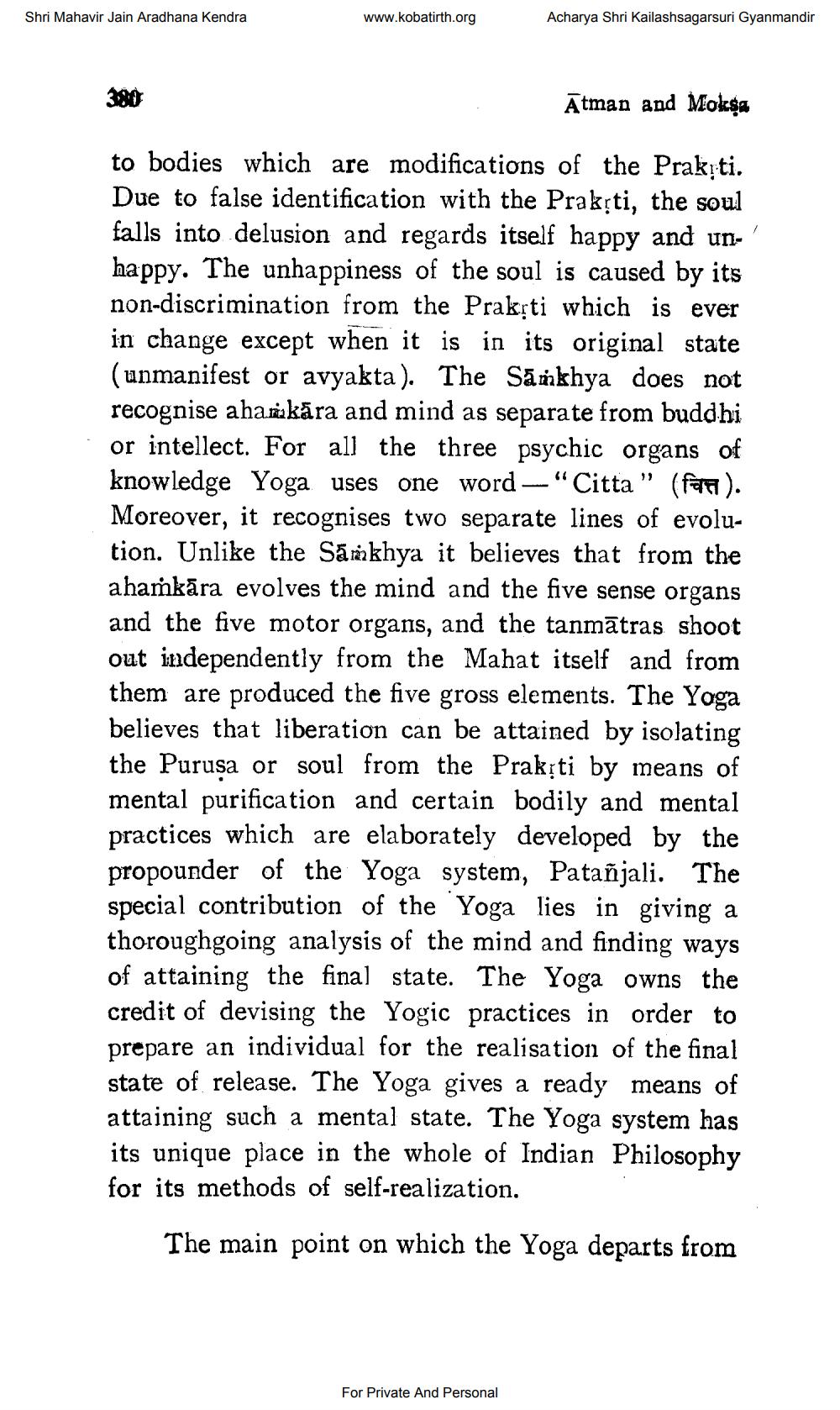________________
Shri Mahavir Jain Aradhana Kendra
www.kobatirth.org
Acharya Shri Kailashsagarsuri Gyanmandir
Ātman and Moksa
to bodies which are modifications of the Prakịti. Due to false identification with the Prakřti, the soul falls into delusion and regards itself happy and unhappy. The unhappiness of the soul is caused by its non-discrimination from the Praksti which is ever in change except when it is in its original state (unmanifest or avyakta). The Sankhya does not recognise ahankára and mind as separate from buddhi or intellect. For all the three psychic organs of knowledge Yoga uses one word “Citta” (fan). Moreover, it recognises two separate lines of evolution. Unlike the Samakhya it believes that from the ahamkāra evolves the mind and the five sense organs and the five motor organs, and the tanmātras shoot out independently from the Mahat itself and from them are produced the five gross elements. The Yoga believes that liberation can be attained by isolating the Puruşa or soul from the Prak;ti by means of mental purification and certain bodily and mental practices which are elaborately developed by the propounder of the Yoga system, Patañjali. The special contribution of the Yoga lies in giving a thoroughgoing analysis of the mind and finding ways of attaining the final state. The Yoga owns the credit of devising the Yogic practices in order to prepare an individual for the realisation of the final state of release. The Yoga gives a ready means of attaining such a mental state. The Yoga system has its unique place in the whole of Indian Philosophy for its methods of self-realization.
The main point on which the Yoga departs from
For Private And Personal




